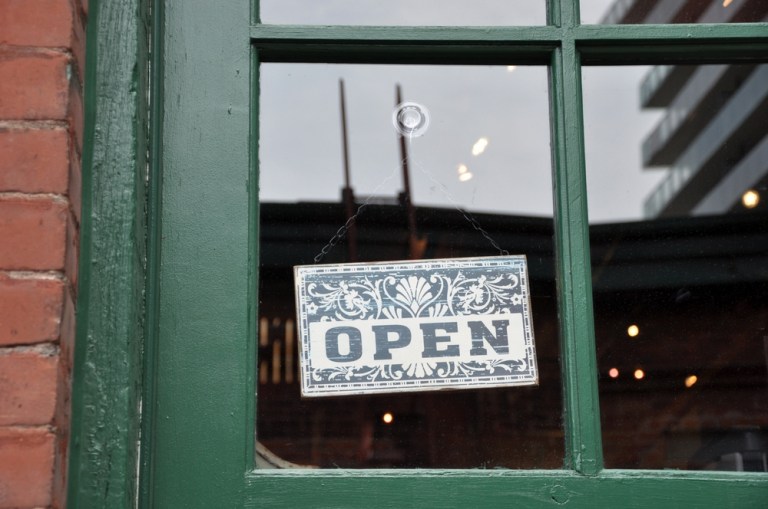
The retail apocalypse is fake news if you ask Mark Cummins, co-founder of Irish startup Pointy.
Brick-and-mortar retail is changing, no doubt, but Cummins noted that it still makes up around 91 percent of all retail spend, while eCommerce claims just 9 percent of consumer dollars.
Against that landscape, it isn’t enough for retailers to post their addresses and hours of operation online; Cummins said they need inventory discoverability to drive physical sales, or customers who don’t know where to find that elusive product will simply order it from a certain eCommerce giant.
Not every physical store is going out of business, said Cummins. Department and apparel stores are closing. Americans are decidedly over shopping malls, yet dollar stores, independent book shops and other brick-and-mortar businesses are growing, not dying.
Although eCommerce will certainly continue to eat up more consumer dollars, Cummins said it’s a mistake to focus exclusively on online sales. Digital and physical channels don’t have to be either/or; they can be both/and. He believes the future of retail will be digital-informed, not digital-only.
That’s why Cummins said Pointy was conceived: to solve for that larger, digital-driven physical transaction piece of the puzzle, which, at Pointy’s founding in 2014, was not really being addressed.
Working at Google, Cummins noticed that, while the search engine had answers for almost every question, it couldn’t provide basic information like, “Where is the nearest shop that has face paint?”
Google had street addresses, contact information and hours of operation for local shops, but if a customer needed a specific type of hammer or wanted a certain fragrance of perfume, their options were to order it from Amazon or head out on a treasure hunt around the shopping mall.
With searches for “_______ near me” rivaling weather forecasts in popularity, Cummins and his co-founder Charles Bibby saw an opportunity to make that experience better for consumers — to help them find what they’re looking for locally rather than to rely on having everything shipped.
Yet it soon became clear that helping consumers meant helping retailers first. Only large national retailers, like Best Buy, could come close to meeting customers’ needs with this type of inventory information. Customers want to do research before buying, even if they ultimately transact in a store, but the limited information available was hindering their ability to do so.
Early research revealed that getting inventory online was a very common pain point for smaller and medium-sized retailers, said Cummins. For many, the problem was simply that they did not know how to get past the barriers of IT.
Cummins and Bibby recognized that retailers needed a simple solution that didn’t require complex integration, so they created a plug-and-play device that tracks inventory and makes that information available via search engines to potential customers who’re doing online research before buying locally.
Fast forward four years, and the Pointy device is plugged in at retail locations across the U.S., Ireland, the U.K. and — since December — Canada. The device was adopted first by small, independent retailers, then began to attract mid-size chains.
Cummins said the startup is now in conversations with larger national chains, which can benefit from the technology because their inventory data is often buried in legacy IT systems — where it does customers little good.
After inventory, Cummins said the next problem to solve is online/offline attribution — a challenge that Facebook and Google are working to address today. It’s difficult to tell how online activity translates to store visits and purchases, but in a changing retail landscape, visibility into those correlations will become critical.
Cummins predicts that the online and offline worlds will only become more closely tied in the future. Retailers will continue to strive to make the offline world more like the online world in terms of convenience, he said, but online will not replace the brick-and-mortar format. Many customers will still choose to go to a destination where they can see and touch products or speak to a live associate for help.
“I don’t see us going to a 100 percent eCommerce world,” Cummins said.